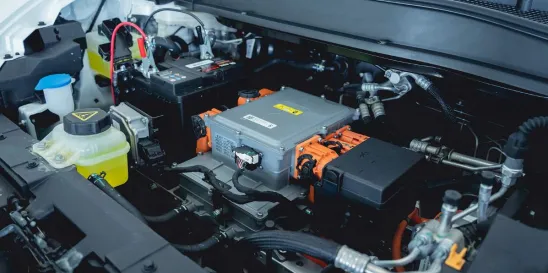In the past year, the global lithium market has been characterized by a significant shift in dynamics, with prices falling precipitously. Despite spot prices reaching over $80,000 per ton in December 2022, they sit at just over $13,000 per ton as of Jan. 30, a decline of over 80%. Oversupply and softening demand leading to falling prices for the critical mineral raise concerns about the potential impact on various industries, particularly those reliant on lithium-ion batteries, such as electric vehicles (EVs), renewable energy storage, and consumer electronics. As a slump continues for the much-touted energy of the future, risks threaten to accumulate for U.S. businesses in the years ahead.
Understanding Lithium Market Dynamics
Lithium, a crucial component in the production of batteries, has been a key element of the advancement of clean energy technology. Along with other critical minerals, including nickel, cobalt, manganese, and graphite, the metal is an essential component in many of today’s clean energy technologies, such as EVs, electricity networks, and wind turbines. In addition, lithium batteries are used in many everyday electronics, from phones, laptops, and tablets to power banks, though at a much smaller level. Over the years, growing government and private sector initiatives to wean dependence off fossil fuels in favor of renewable energy solutions initially led to a spike in lithium prices, creating a robust market for the mineral.
However, several key factors have triggered a shift in the landscape. As Citibank termed it, a “perfect storm” has hit the lithium market, caused by destocking, deceleration in EV demand, and continued supply growth. The sudden deceleration in demand for lithium, particularly in the EV industry, caught suppliers by surprise, and as their stockpiles increased, this surplus placed downward pressure on prices. Much of the fallout has been compounded by large-scale anticipation and investment in the EV industry, as high lithium prices made projects previously deemed economically unviable suddenly profitable and able to deliver products online much quicker than anticipated. Yet economic uncertainty in the past year propelling consumers to grow more cautious about their expenditures has resulted in disappointing returns. This is especially true as China, the world’s largest EV market, is experiencing a sluggish resurgence in domestic consumer spending following the abandonment of its COVID-19 containment policy in late 2022. Seasonal weakness presents further anticipated declines as China’s Lunar New Year approaches this month, which historically sees lower demand for lithium products.
Critical Considerations
On the surface, commodity price fluctuations and over-investment in production are hardly unusual. However, what differentiates lithium and makes the situation potentially volatile is the intense geopolitical competition brewing over the mineral, the complex regulatory environment, the lack of a formal lithium commodity market and uncertainties in the timeline of energy transition linked to mitigating climate change. China dominates the lithium-ion battery industry, with Chinese companies supplying 80% of battery cells worldwide, leaving U.S. companies exposed to supply chain vulnerabilities. Persistently low prices could synchronize with China’s large-scale manufacturing capabilities, enabling the country to continue subsidizing production in times of low demand, dumping products at below-market prices onto the global market, and restricting access to lithium-ion batteries to certain countries or companies as it sees fit. Despite this, regulatory solutions have been slow to catch up. President Joe Biden’s 2022 Inflation Reduction Act offers a full tax credit of $7,500 for purchases of EVs that contain a certain percentage of the value of the battery component that does not originate in China and is produced and manufactured in North America, set to take effect this year. However, critical mineral mining, refining, and battery production cannot be developed in this time frame while adhering to environmental and safety standards to which U.S. and European companies are bound. As a result, most EVs today in the U.S. would not qualify, disincentivizing consumers.
In addition, the potential of lithium to provide a lasting solution for reducing dependence on fossil fuels and combatting climate change becomes more limited as price volatility continues. Though in the near term, while lower prices benefit consumers who were previously unable to purchase lithium-based technologies, including some green energy industries, suppliers will find it less profitable to invest in long-term efforts to increase production, leading to further market misalignments down the line. Furthermore, current lithium mining techniques present their own slew of environmental concerns, including water contamination and landscape degradation. With costs mounting and returns appearing weak, Western companies involved in the extraction process may find it cumbersome to abide by environmental guidelines while maintaining profitability.
Risks for Businesses
Although lithium prices remain in free fall for the time-being, the energy transition away from fossil fuels and present lack of suitable alternatives suggest that demand for lithium-powered energy sources will continue rising over the next decade as governments attempt to meet clean energy goals. According to a study by McKinsey, global demand for lithium-ion batteries is predicted to grow from around 700 gigawatt hours (GWh) in 2022 to 4,700 GWh in 2030, propelled primarily by mobility applications (such as EVs), followed by stationary storage, and lastly, consumer electronics. The report predicts demand growth to be highest globally in the U.S. and EU, though a substantial number of new battery factories will need to be built over the decade, necessitating market cooperation from firms.
S&P Global projects that lithium carbonate prices will stabilize near current levels in a range between $20,000/mt and $25,000/mt from 2024 to 2027. Stability is key to attracting investment, with prices reaching a sweet spot to be low enough so that consumers (i.e., battery manufacturers) can turn a profit, but high enough to entice suppliers towards continued expansion.
U.S. businesses currently face pricing disincentives for investment in lithium as a commodity, as present market conditions dictate less room for profitability in the face of fluctuating consumer demand. Nonetheless, opting out of the race for this critical mineral proves risky as well, provided that a clean energy transition is inevitable in the years to come. Producers that decide to move away from lithium, as well as those who get priced out in the current market scenario, may find themselves at the mercy of a future energy industry dominated by the critical mineral. Technology plays a variable factor, with recent reports suggesting that artificial intelligence can improve profitability and feasibility for extraction efforts, as well as improve efficiency by reducing the amount of lithium needed for batteries. But beyond these uncertainties, it remains likely that lithium demand will be buoyed as energy transition gains momentum globally, and as the market matures, pricing mechanisms, such as a futures market, will emerge to better manage the cyclical market conditions.
This article was authored by William Samir Simpson.




 />i
/>i

